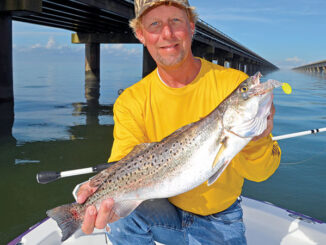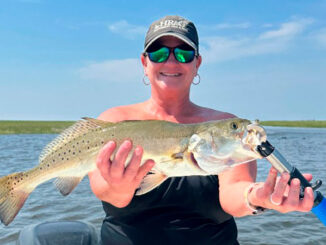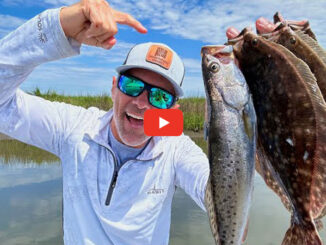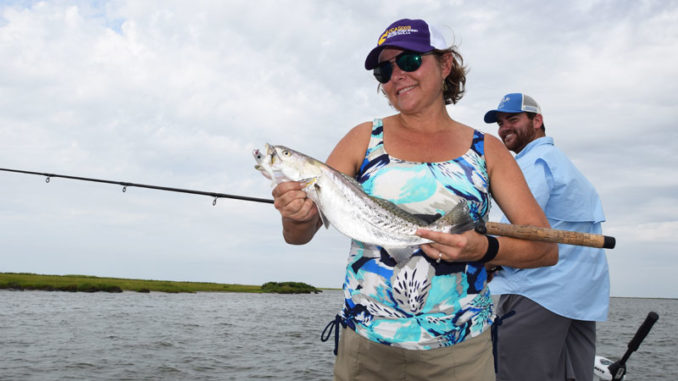
Trout are following baby croakers
Although springtime is when most anglers forget all about the inside bayous and target super-charged specks in the open bays, many fish remain in interior waters to feed on baby croakers.
These fish will be found in many of the same holes they inhabited during the heart of the winter.
The only difference is that they feed much more aggressively when tomatoes are ripening than they did when they were hanging tinsel on their Christmas trees. Rather than the dead weight wintertime anglers feel on the ends of their lines, springtime deep-water specks tattoo soft plastics; their strikes are unmistakable.
To find productive areas, look for deep water in bayous or at the intersections of canals. The fish will most often be oriented to a steep shelf, which anglers will typically find at the inside turns of bayous.
At canal intersections, the fish will likely be at one of the two upcurrent points.
The most productive technique is to position the boat slightly downcurrent of the bend, and cast upcurrent across the point. Use double-rigged grubs on ¼-ounce jigheads (3/8-ounce in very swift currents), and be certain the baits reach the bottom.
Baits that match croakers in color are most effective.
This pattern is productive until about the middle of May, when the croakers get big enough to abandon the relative safety of the deep holes, and head out to the bays.
Strong tides make inland trout easy to pinpoint
Islands in open bays draw speckled trout in the late spring and throughout the summer like a neighborhood snow-ball stand draws sweaty kids.
Many anglers believe the islands serve as meeting places for amorous specks looking to spawn, but actually, that’s a fallacy.
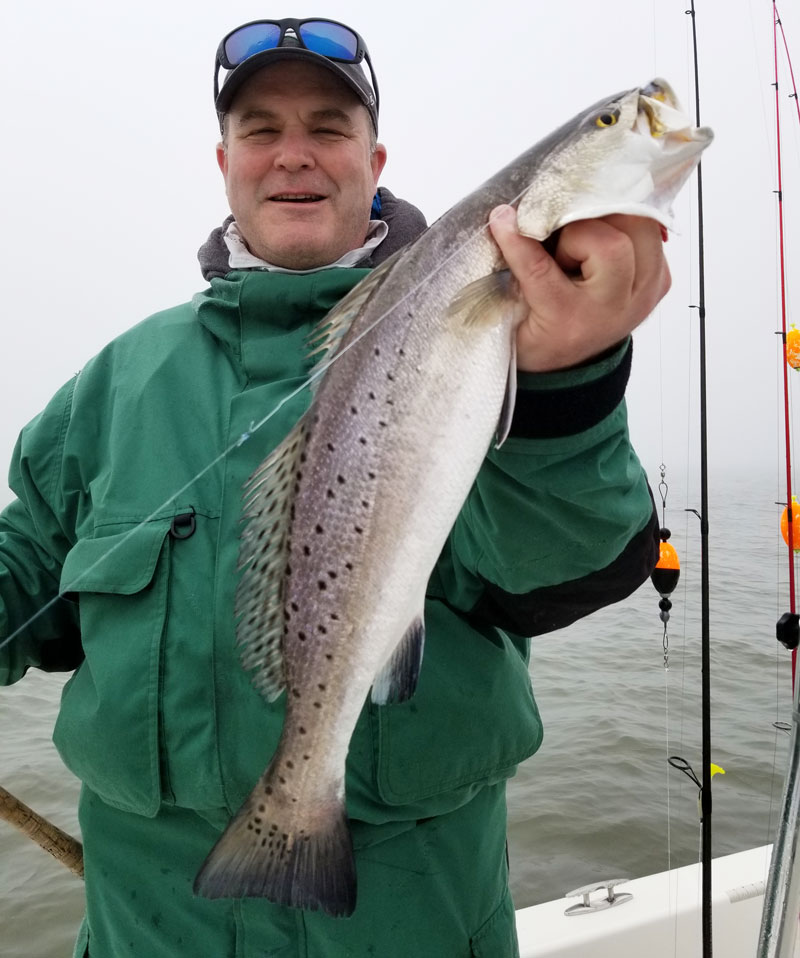
Because trout are batch spawners, they need to “hook up” in areas with high current velocities, and that’s just not true of islands. Specks go there not because they provide good current but, quite to the contrary, because they provide good current breaks.
Although specks handle currents pretty well, the smaller fish that they feed upon — especially finger mullet — don’t, and they must seek shelter from the swift water.
In moderate to strong tides, mullet will often be seen to line up behind tide breaks such as points on islands. For hungry speckled trout, this is like having a free night at the Ryan’s all-you-can-eat buffet. Specks feast upon the hapless mullet, but the baitfish have no choice but to stay in the lee of the point. All each mullet can do is hope that the specks find its friends more attractive.
For anglers, hard-plastic plugs are particularly productive under such a scenario. Mullet-colored topwater baits will draw heart-stopping strikes, especially throughout the late spring.
As the waters get hotter in July and August, anglers will find suspending baits like Catch 5s and Bomber Long A’s to be more productive, especially in the early morning hours. In mid-day hours during the smoking-hot summer, live croakers or mullet are about the only baits these fish will bite.
In weak tides, the mullet flee from the current breaks and spread out in the bays, making the trout schools more difficult to find.
